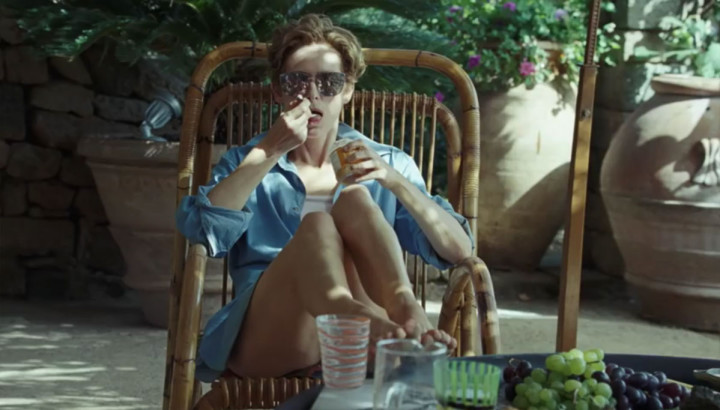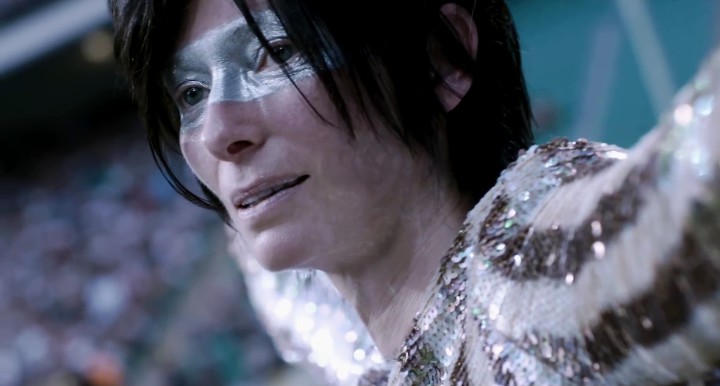At first, I was a little disappointed with Luca Guadagnino’s English-language debut, A Bigger Splash, but I think only because it simply wasn’t as devastatingly great as his previous film with Tilda Swinton, I Am Love (2010). And that’s unfair, because few things are as sublimely operatic and breathless as I Am Love. On its own merits, A Bigger Splash may miss greatness — but only just, and time may correct that assessment. It’s more lurid, more pulp-ish, but just as compelling in a different key. It’s a kind of chamber piece with four main characters holding the screen for most of its two hours. Its soundtrack is more rock than opera (though Verdi does sneak in), and the music for the film is drawn entirely from existing recordings.
The premise is simple. Glam rock star Marianne Lane (Swinton) and her lover Paul De Smedt (Matthias Schoenaerts) have tucked themselves away in splendidly appointed isolation on an island off Italy while Marianne recovers from throat surgery that leaves her unable to speak above an occasional whisper. (Rarely has an actress in a talkie given such an essentially pantomime performance.) This peaceful existence is soon shattered by the unexpected — and not entirely welcome — arrival of her ex, music producer Harry Hawkes (Ralph Fiennes), and his recently discovered daughter, Penelope (Dakota Johnson, atoning somewhat for Fifty Shades of Grey). To complicate matters, Harry has (deliberately) arrived without a hotel reservation at a peak time, so the unannounced duo have to take up residency at Marianne’s luxurious compound.
What follows is a series of uneasy interactions among the four. Harry, who seems more a force of nature than a person at first, pretty much dictates the action. The others seem mostly powerless to help, even those like Marianne, who is so used to his stories that she can mouth every word Harry speaks. This, of course, is all surface. The film is about all the tangled passions, histories and desires just beneath the sophisticated, glossy surface. This is what will lead the film on its sometimes predictable, sometimes strange and even tragic course.
It would be easy to reduce Guadagnino to a master stylist working in the realm of arty trash — allowing us to watch our betters comport themselves in ways that are limited to the extremely wealthy and/or famous. There might, in fact, be some truth to that, but his glamorous worlds feel either like beautiful prisons or just slightly imperfect. (I never have that Nancy Meyers’ Architectural Digest sense with Guadagnino.) It helps, of course, that he’s left us in the hands of two great performers: one excellent one and one surprisingly good one. That he gives them space to breathe, yet so controls every aspect of the film (his use of Harry Nilsson’s “Jump Into the Fire” is amazing), is a unique gift.
As always seems to be the case each time he does anything different, Ralph Fiennes is receiving the bulk of the kudos here. No doubt, his Harry Hawkes is both a preposterous delight and a figure with an undercurrent of desperation and even tragedy. But he’s not working alone. He’s met step-by-step by Swinton’s aging glam rocker. (What other kind of rocker could Swinton, who has always flirted with androgyny, be?) It’s a terrific pairing — in a film that’s very near terrific itself. Guadagnino had such a good time with the cast that he’s invited them to be in his remake of Suspiria. Rated R for graphic nudity, some strong sexual content, language and brief drug use.









This’ll be gone on Friday. A pity.